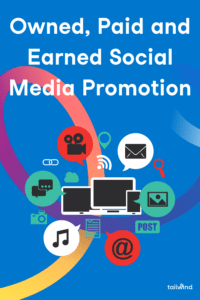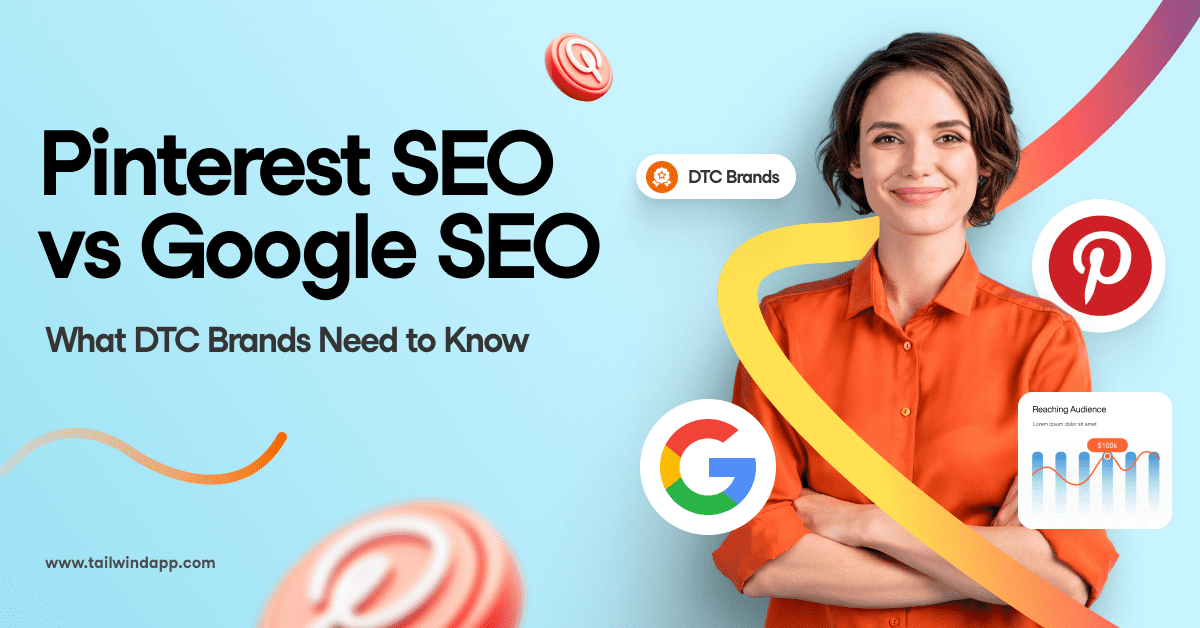
Owned, paid, and earned media each play unique roles in digital marketing. Learning their definitions and how to mix them effectively can boost your strategy.
Each of them serve their unique purpose, and the goal of this post is to explain how each of them work and how they can contribute to your success!
Defining the Three Media Types
Owned Media includes the digital assets your business controls, like your website, blog, or social media accounts. You have full control over the content and its distribution here.
Paid Media involves paying for advertising to bring traffic to your owned media properties. This includes ads on Google, Facebook, or sponsored posts. This type of media is very useful for reaching a wider audience quickly.
Earned Media is publicity gained through word-of-mouth. This includes mentions, shares, reviews, or media coverage. It’s free and highly credible but can be hard to control.
The Role of Each in Digital Marketing
Owned media forms the base for your digital presence. It’s your primary platform to share your brand message and engage with your audience.
Think of your website or blog as your home base online.
Paid media amps up your visibility. It brings more eyes to your content fast — especially useful for new products or promotions.
Paid ads can target specific groups, boosting the effectiveness of your campaigns.
Earned media builds trust and credibility. Positive mentions from users or press are seen as more credible than your own content. This type of media can go viral, giving your brand a big boost without extra cost.
Integrating Owned, Paid, and Earned Media for a Synergistic Strategy
To get the best results, you should integrate these three types of media.
Start with strong owned media to establish your presence. Use paid media to drive traffic to your owned content.
Encourage earned media by creating shareable and engaging content. Engage with your audience, and ask satisfied customers to share their experiences.
Monitor social media for mentions and respond quickly to build relationships.
When used together, owned, paid, and earned media can create a powerful, balanced strategy. Each type supports the others, leading to better reach, engagement, and trust for your brand.
Developing a Strong Owned Media Presence
Building a strong owned media presence is vital for any brand. Focus on your website, blogs, social media accounts, and email marketing to engage and grow your audience.
Leveraging Websites and Blogs
Your website is your digital storefront. It needs to be user-friendly, well-designed, and mobile-responsive.
Regularly updated blogs help improve your search engine ranking and keep visitors engaged.
Create valuable content that answers questions your audience may have. Use keywords related to your industry to improve SEO.
Share your blog posts on social media to increase visibility.
Include a blog section on your website if you don’t have one. A blog with informative articles can establish you as an authority in your field.
Consistency in posting is key. Aim for at least one quality post per week.
Utilizing Social Media Accounts
Social media platforms are a great way to connect with your audience directly.
Choose platforms where your audience is most active. This could be Facebook, Twitter, Instagram, or LinkedIn.
Create and share content that resonates with your followers. This can include text posts, images, infographics, videos, and live streams.
Engagement is essential. Respond to comments, join conversations, and use analytics to track what works best.
Schedule your posts using tools like Hootsuite or Buffer to ensure consistency.
Regular posting keeps your audience engaged and increases your brand’s visibility.
Email Marketing and Newsletters
Email marketing allows you to send targeted messages directly to your audience.
Build an email list through sign-ups on your website and social media. Offer incentives like free e-books or discounts to encourage sign-ups.
Send newsletters regularly to keep your audience informed and engaged. Share updates, promotions, and valuable content.
Personalize your emails to make them more relevant to your audience.
Use an email marketing platform like Mailchimp or Constant Contact to manage your campaigns.
Track open rates, click-through rates, and other metrics to improve your strategy.
Maximizing Reach with Paid Media
Paid media allows you to target specific audiences and increase the visibility of your content. Effective use of platforms, budgeting, and choosing the right types of ads can significantly enhance your reach and engagement.
Navigating Paid Social and Search Ads
Paid social and search ads are key tools for reaching a larger audience.
On platforms like Facebook and Google, you can create ads that appear in users’ social feeds or alongside search results.
Using demographic and interest-based targeting, you can reach people who are more likely to engage with your content.
CTR (Click-through rate) is an important metric for these ads. High CTR means users find your ad relevant.
Using enticing images or headlines improves CTR, translating to better visibility.
Budgeting and ROI Considerations
Setting a budget for your paid media campaign is crucial. Determine how much you can spend and consider the cost-per-click (CPC) or cost-per-impression (CPM) of your ads.
Google Ads and Facebook Ads both provide tools to help you stay within budget.
Track your ROI (Return on Investment) by monitoring conversions and sales from your ads.
Use analytics to understand what is working and make adjustments.
Choosing the Right Platforms and Media Types
Selecting the right platform for your paid ads depends on your audience.
Facebook is effective for visual content and wide reach. Google Search Ads can target users actively looking for specific information or products.
Different media types like video, image, and text ads work differently on each platform.
Experiment with various ad formats to see what resonates best with your audience and yields the highest engagement.
Leveraging Earned Media for Brand Credibility
Earned media can be a game-changer for boosting credibility and brand awareness. This includes working with influencers and journalists, generating word-of-mouth and shares, and elevating your brand through customer reviews and mentions.
Working with Influencers and Journalists
Influencers and journalists have built trust with their audience. When they talk about your brand, their followers are more likely to believe and support it. You should collaborate with those who align with your brand values.
Provide them with compelling stories or products they can share. This helps in getting authentic content.
Influencers can create posts, videos, or stories featuring your brand. Journalists can write articles or news pieces.
Engaging these figures effectively can greatly enhance your visibility and credibility.
Generating Word-of-Mouth and Sharing
People trust recommendations from their friends and family more than traditional ads.
- Encouraging your customers to share their positive experiences creates natural, word-of-mouth promotion.
- You can prompt this by creating share-worthy content and experiences.
- Run social media campaigns encouraging sharing. Host contests or giveaways.
- Use a branded hashtag to make it easy for customers to participate.
- Make sure your content is easy to share — whether it’s engaging visuals, interesting stories, or helpful tips.
Word-of-mouth and social media shares can significantly increase your brand awareness.
Elevating Brand through Customer Reviews and Mentions
Customer reviews and mentions are vital for credibility.
Positive reviews on platforms like Google, Yelp, or social media serve as proof that your products or services are reliable.
Encourage happy customers to leave reviews. Share these reviews on your own social media channels and website.
Monitor mentions of your brand to engage with customers who talk about you.
Respond to both positive and negative feedback swiftly and professionally.
Highlighting positive customer experiences shows potential customers that your brand is trusted and credible.
Crafting Effective Social Media Promotion Strategies
When creating effective social media promotion, focus on engaging your target audience, producing quality content, and using analytics to improve performance.
Target Audience Engagement
- Understanding who you want to reach is crucial.
- Identify your target audience by considering factors like age, interests, and location.
- Create personas to represent these audience segments.
- Use polls, questionnaires, and interactive content to directly engage them.
- Respond promptly to comments and messages to show you value their input and build relationships.
Creating Quality Content and Messaging
- Content should be both informative and engaging.
- Use high-quality images and videos to draw attention.
- Craft messages that are clear, concise, and relevant to your audience.
- Consistency in posting helps maintain interest. Use a content calendar to plan and organize your posts.
- Experiment with different content types like stories, livestreams, and user-generated content to keep things fresh.
Utilizing Analytics for Performance Improvement
Track your social media metrics to understand what works and what doesn’t.
Use tools like Google Analytics, Facebook Insights, and Twitter Analytics to monitor engagement, reach, and conversion rates.
Analyze patterns and trends to refine your strategies.
Adjust your content and posting schedule based on what the data shows.
Regularly reviewing analytics helps you stay effective in your social media promotions.
Measuring Impact and Adjusting Tactics
To make sure your social media efforts pay off, it’s important to track outcomes and adjust your methods based on data. Focus on conversions, audience behavior, and feedback to keep improving.
Tracking Conversion and Reach
Understanding how many people see your content and then take action is key.
Use tools like Google Analytics or social media insights to track conversions and reach.
- Conversion: Observe how many clicks lead to sales or sign-ups.
- Reach: Measure how many people interacted with your posts.
Check metrics regularly to understand what works. Tracking both helps refine your marketing strategy.
Knowing where and how your audience engages can show you where to invest more effort.
Analyzing Audience Behavior
Knowing your audience’s habits helps tailor your message.
Analytics tools can reveal:
- Demographics: Age, location, and interests of your followers.
- Engagement: Likes, shares, comments, and time spent on posts.
Patterns in this data can guide content creation. For example, if video posts get more engagement, consider using more videos. Always cater your strategy based on how your audience behaves online.
Adapting in Response to Feedback and Trends
Use feedback and trends to stay relevant.
Listen to your audience through comments, reviews, and messages.
- Feedback: Direct comments and reviews can offer insights.
- Trends: Stay updated with industry trends and viral content.
Adjust your tactics based on this information. If feedback suggests a certain type of post is more popular, create more of that content. Keeping up with trends ensures your strategy remains fresh and engaging.





